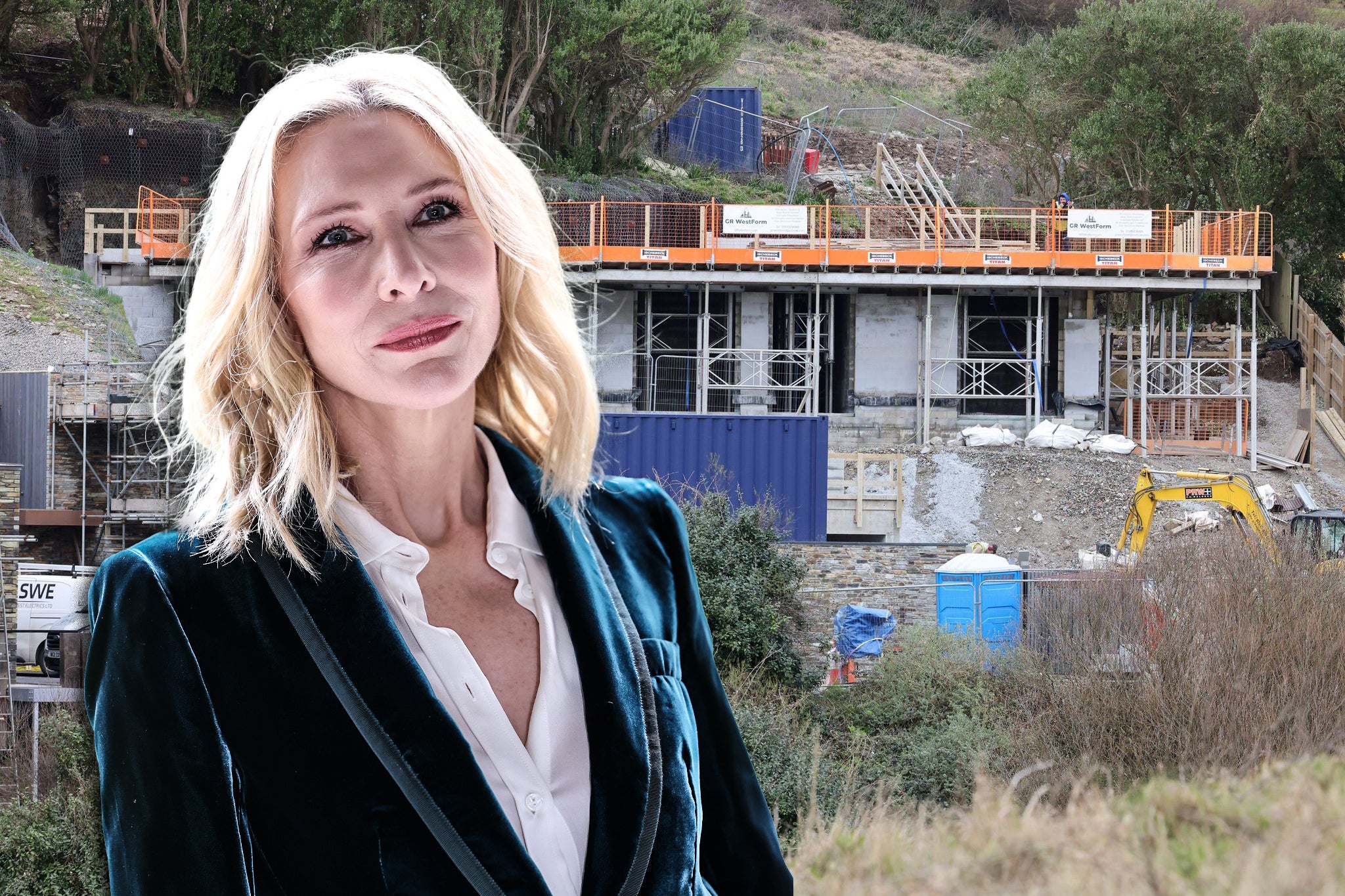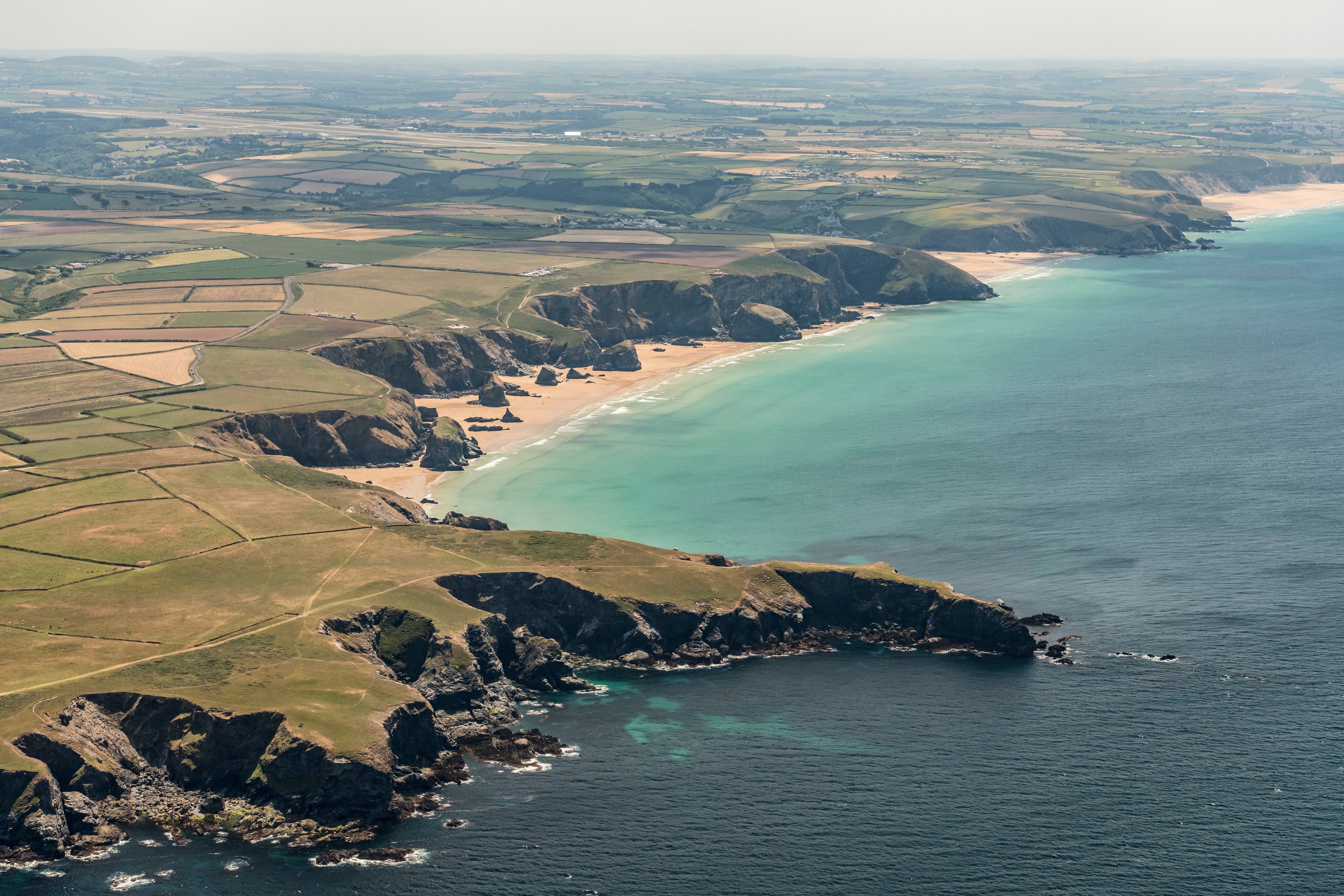How the Hollywood elite have turned the eco-home into the ‘ego-home’
Cate Blanchett is just the latest A-lister to upset locals with construction work on her eco-mansion in Cornwall. Here, Jonathan Glancey looks at the growing trend for one-percenters’ green-styled mega-homes and asks: are they really just the latest show-off status symbol?

“Mawgan Porth”, claims its local website, “is a little-known but never forgotten village on the rugged coastline of North Cornwall. With spectacular scenery and a phenomenal beachfront, there is no surprise in learning that those who have discovered the raw beauty of Mawgan Porth are reluctant to share!”
Save, that is, with a front row of fellow A-list, beach-ready, eco-aware, celebrities: Jason Momoa; Jason Statham; Jamie Dornan; Stanley Tucci. And a name, you surely will recognise, Cate Blanchett.
With its enclosing cliffs and Atlantic rollers, the sandy cove here is naturally glorious. From an architectural viewpoint, Mawgan Porth is a sprawl of suburban-style homes, dating mostly from the 1930s to the present day.
It feels at odds with the wild Cornish landscape, but what appears to ire local people most is the incoming tide of big, new glazed bunker-style eco-homes built for film stars flocking here like herring gulls to rubbish bins outside seafront fish-and-chip shops. Welcome to Hollywood-on-Sea.
With all the noise involved in its construction, Blanchett’s new “eco” house, designed by Watershedd, a firm of London and Cornwall architects, is said to be causing those with holiday homes to rent in Mawgan Porth a loss of earnings.
Perhaps, yet who has minded when other big new houses you can rent here with their infinity pools, hot tubs, saunas, 55-inch TVs and surfboard rooms have been dug, drilled and hammered into place?
And, when accusations are made of wealthy incomers “knocking down traditional 1930s bungalows” to make space for their fashionable, big new eco-bunkers, who stops to think of those who once lived here and had to watch 1930s bungalows sprouting incongruously from virgin sands?
Of course, it rankles when homes to buy or rent in seaside towns and villages become impossibly expensive for most local people as second, third or multiple homeowners, like the Hollywood set, commission big new houses with the best sea views. Who, though, sells them houses to demolish or land to build on at inflated prices? Not local people, surely?

In a sense, it was ever thus. Rural Surrey became posh suburban Surrey soon after the arrival of the railways. Now it was possible, should you happen to earn a handsome wad in the City, to buy some farmland and commission the likes of Edwin Lutyens to design an ingenious and beautifully crafted house that would draw other City families to settle in homes in a similar style in what was fast becoming Stockbroker Surrey.
When, from the late 1990s, Premier League Mancunian and Liverpudlian footballers began making as much or even more moolah than bankers, they built, and continue to build, what the media describe as “sprawling mansions” in Cheshire, notably in pretty towns like Knutsford and Prestbury in and around Alderley Edge.
The one-percenters clearly feel safe in numbers, gathering around Cotswold villages or Cornish beaches like bees around a honey pot – exclusive, mango-scented Pitcairn honey
Owing more to American hotels than English domestic design, several have replaced older houses and this, according to newspaper reports, “infuriates” neighbours, even when the older houses themselves were indifferent and out of kilter with their surroundings.
Then, of course, there’s Hollywood itself. As Tinseltown boomed, newly fledged stars flocked to the hills to, as Aldous Huxley described in his 1939 novel After Many a Summer, “houses all new, almost in good taste – elegant and witty pastiches of Lutyens manor houses, of Little Trianons, of Monticellos; light-hearted parodies of Le Corbusier’s solemn machines-for-living-in; fantastic adaptations of Mexican haciendas and New England farms. The houses succeeded one another, like pavilions at some endless international exhibition.”
Now Hollywood celebs are converging on quaint Cornish coves, knocking down old homes, and putting up bunker-style houses that try yet fail to blend into their locations, mostly because of their size. That of their car parks, too. What makes these new residents seem disingenuous – unpopular, too – is their tendency to flaunt their green credentials while causing an unholy mess to Cornwall’s green and pleasant land.
Neighbours near Blanchett’s development have complained of facing major disruption caused by construction traffic with a constant stream of earth-moving diggers and drills to sink the foundations, which in turn has damaged the delicate coastal wildlife habitat.

Blanchett herself co-presents Climate of Change, a podcast with Danny Kennedy, CEO of New Energy Nexus – “connecting entrepreneurs to capital to build an abundant clean energy economy that benefits all” – which is fine and dandy, yet no amount of bat boxes, green sedum roofs and ground source heat pumps will make a big new house somehow “green” especially if it has a big car park.
As locals have pointed out, multi-pound developments like these may have eco-ingredients, but they completely alter the character of the beautiful bays and paths and the grazing lands of the coastal heathland.
One local resident told Cornwall Live “The original cottage used to have a lot of land around it which was great for wildlife. Now they seem to be building right to the very edge of the plot. It feels like they’ve left nothing for the birds or the insects – not even a bee or a worm.”
It’s all a bit of a conceit – as much ego-build as eco-build – like carbon-offsetting is or owning an electric Range Rover or running your new Sikorsky S-92 helicopter, ideal for hurried trips to eco-conferences, on fuel pressed from the skins of Château Peyraguey grapes. Or, if, my dears, this isn’t a wine you’ve ever tasted, from strawberries, perhaps.
The one-percenters clearly feel safe in numbers, gathering around Cotswold villages or Cornish beaches like bees around a honey pot – exclusive, mango-scented Pitcairn honey brought to you, meditatively, from Polynesia on board a Kon-Tiki-style raft. If they wanted true eco-homes and even to eschew the ozone of publicity, would it not be better to look instead for an old house, off the beaten coastal path, and fix it?
Or build an imaginative new house – not too big – wreathed in creepers and tucked near invisibly into the landscape, like Creek Vean, a mid-Sixties design, now Grade II* listed, by the young Team Four – Su Brumwell, Norman Foster, Richard Rogers and Wendy Cheesman – at Feock on the River Fal near Truro.
Or, some small and poetic clay and wattle cabin in a bee-loud glade. These could be discreet, likeable homes, beyond Mawgan Porth’s just and unjust criticisms, that those who own them might be reluctant to share. Even with the paparazzi.
Join our commenting forum
Join thought-provoking conversations, follow other Independent readers and see their replies
Comments
Bookmark popover
Removed from bookmarks